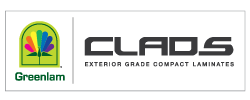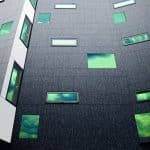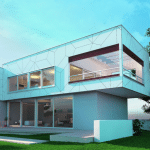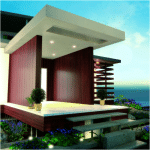As cities grow vertically, the role of façade design becomes increasingly complex. High-rise buildings present challenges that go beyond aesthetics — demanding materials that are safe, durable, lightweight, and easy to maintain. In this context, laminate wall cladding, especially HPL wall cladding, is emerging as a smart and reliable solution for modern vertical architecture.
Whether you’re designing for commercial towers, institutional campuses, or high-rise residential buildings, it’s important to consider how the right wall cladding can impact the building’s long-term performance and appeal. This blog explores how HPL wall cladding meets the unique demands of high-rise architecture.
Understanding the Demands of High-Rise Façade Design
Designing for elevation introduces a new set of priorities. Buildings over ten storeys face:
- Greater wind loads, requiring cladding materials to resist impact and vibration.
- Intensified sun exposure, making UV resistance essential.
- Difficult access for cleaning and repairs, which means maintenance must be minimal.
- Fire safety compliance, where flame retardancy is non-negotiable.
Traditional options like plaster, tiles, or wooden wall cladding often fail to meet these requirements consistently over time. The stakes are higher at scale — any degradation becomes more noticeable and costlier to fix.
Related: 11 Compelling Reasons to Invest in Greenlam Exterior Wall Cladding
Why Material Selection Matters at Height
When cladding fails in a high-rise environment, the consequences are magnified — from visual degradation to structural risk.
Wooden wall cladding, while warm and aesthetically pleasing, is prone to issues like swelling, fading, and cracking in outdoor environments. Over time, it requires re-staining, polishing, or replacement — a costly and time-consuming process at height.
Exterior laminate wall cladding, particularly in the form of high-pressure laminates (HPL), is engineered to provide a weatherproof, fade-resistant, and dimensionally stable solution, making it ideal for vertical applications.
HPL Wall Cladding: Engineered for Elevation
HPL (High Pressure Laminate) wall cladding is manufactured by compressing layers of kraft paper and decorative surfaces under high heat and pressure. The result is a solid, compact board with exceptional outdoor performance.
Key performance benefits include:
- High impact resistance, vital for high wind zones
- UV resistance, ensuring long-lasting colour and surface integrity
- Dimensional stability, which prevents warping or buckling
- Fire-retardant options, supporting compliance with building safety norms
- Anti-bacterial and anti-graffiti features, ideal for public or commercial buildings
Greenlam Clads’ HPL panels are designed specifically for outdoor use and have been rigorously tested for performance in high-rise and harsh weather environments.
Related: Weatherproof Wonders: How HPL Exterior Panels Stand Up to the Elements
Design Versatility Without Compromise
One of the greatest advantages of compact laminate wall cladding is that it allows architects to achieve ambitious visual concepts without sacrificing practicality.
With Greenlam Clads, you get:
- A wide array of finishes — wooden wall cladding designs, concrete, metallics, solid colours
- Grooved and textured surfaces for depth and visual interest
- Seamless integration into modern and traditional architecture
- Panels that can be customised to reflect brand identities or thematic palettes
For tall buildings, where cladding becomes a core element of identity, this level of flexibility is invaluable.
Installation Considerations for High-Rise Projects
While some façade systems become cumbersome to manage at scale, HPL wall cladding is relatively straightforward.
Greenlam Clads’ panels are:
- Lightweight and pre-finished, allowing for fast, clean installation
- Compatible with ventilated façade systems, helping regulate thermal load
- Available in large board sizes, reducing visible joints and material wastage
This is particularly beneficial in high-rise construction, where time efficiency and structural precision are paramount.
Related: The Impact Of Wall Cladding On Building Envelope Performance
Low Maintenance, High Payoff
One of the biggest cost considerations in tall buildings is maintenance. Exterior access systems — from cradles to scaffolding — are expensive and logistically complex. Therefore, minimising the need for routine maintenance becomes crucial.
HPL wall cladding panels from Greenlam Clads are:
- Stain- and dirt-resistant, needing only mild cleaning
- Non-porous, resisting water ingress, mould, and mildew
- Designed to maintain colour integrity, even in extreme sun and pollution
Unlike natural materials that require sealing, repainting, or surface treatments, HPL retains its look and structure with minimal intervention — which translates to significant savings over the building’s lifecycle.
About Greenlam Clads
Greenlam Clads offers industry-leading HPL exterior wall cladding solutions designed to meet the unique challenges of high-rise architecture. Engineered for strength, weather resistance, and design versatility, our laminate wall cladding panels are ideal for exterior applications that demand both performance and visual impact. With a wide range of finishes and long-lasting durability, Greenlam Clads empowers architects and developers to build façades that stand the test of time. Explore our collection and elevate your next skyline project today. For more information or assistance, call 1800 833 0004 or email info@greenlam.com.









